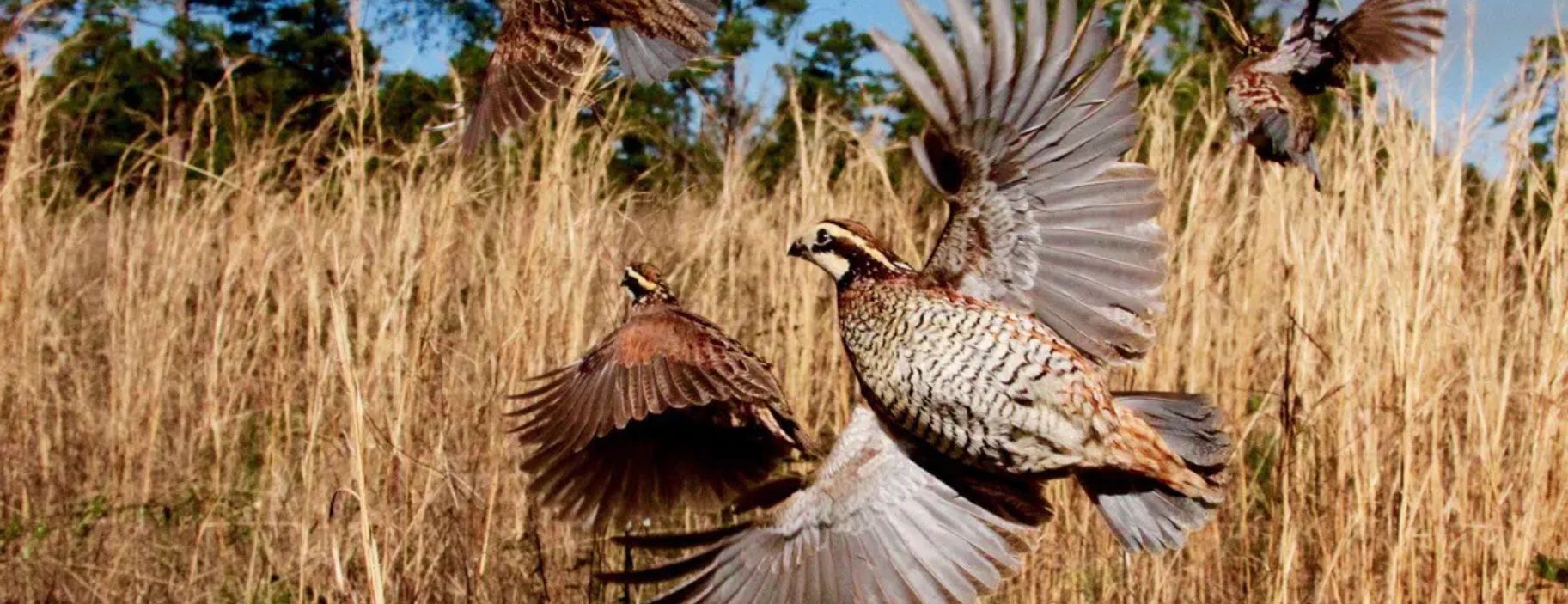
Quail Surveys Raise Expectations for Another Quality Hunting Season
AUSTIN – Quail hunting season kicks off on Nov. 1 in Texas, and the annual Texas Parks and Wildlife Department (TPWD) roadside survey revealed some encouraging population numbers heading into opening day. Good habitat conditions along with timely rainfall helped bobwhite and scaled quail production this last spring and summer.
“Texas Parks and Wildlife Department biologists covered over 3,300 road miles in early August during our annual roadside quail surveys,” said Patrick Schutz, TPWD Upland Game Bird Program Leader. “Overall, we are encouraged by the numbers in this year’s surveys and anticipate a good season for hunters especially in the Rolling Plains, South Texas and Trans Pecos regions where populations have traditionally been the strongest.”
Bobwhite quail benefitted from improved habitat for chicks thanks to above average rainfall throughout most of their range. Bobwhite populations in the Rolling Plains appear to be similar to last year but reports in many areas in this ecoregion show above average bobwhite numbers.
Teacup Mountain Wildlife Management Area (WMA) in north Texas will provide a new public hunting opportunity for this upcoming season. Along with the Matador WMA, TPWD expects average to above average hunting opportunities at these WMAs.
South Texas should provide good opportunities for hunters looking to harvest birds this fall. The typical number of bobwhites seen per route by biologists was 12.70 compared to 9.13 last year, above the 15-year mean of 9.78.
“South Texas remains a stronghold and bobwhite populations appeared to increase the further south you go within the region,” said Schutz. “This region accounted for over 50 percent of the estimated total bobwhite harvest last season and biologists are encouraged by the bobwhite numbers they’ve observed recently. Public hunting opportunities in this ecoregion can be found at the Chaparral and James E. Daughtrey Wildlife Management Areas and we expect these WMAs to provide fair hunting conditions.”
The 2025 scaled quail population survey revealed that population numbers increased across their range. The average number of scaled quail seen by biologists was above the 15-year mean in all ecoregions and reported good carryover from the previous year. Birds were observed on more than 70 percent of the surveys in the Trans Pecos ecoregion and on more than 50 percent of the routes in the Edwards Plateau ecoregion.
“The Trans-Pecos and Edwards Plateau were in drought conditions early on, but rainfall and habitat conditions improved through mid to later summer,” said Schutz. “Early spring rains and good habitat conditions in the High Plains provided for some early nesting, increased calling activity and multiple broods observed throughout the region.”
The Edwards Plateau and High Plains ecoregions made the biggest leaps in scaled quail sightings during August surveys. The average number of scaled quail seen in the Edwards Plateau was 14 per route compared to 6.38 last year, which was significantly above the 15-year mean of 6.47. Out in the High Plains, the number of scaled quail seen per route by biologists was 7.75 compared to 3.83 last year, above the 15-year mean of 3.42.
TPWD biologists expect Black Gap and Elephant Mountain WMAs to provide average to above average opportunities for scaled quail despite limited early season production due to continuing drought in the region
TPWD provides a full regional breakdown of this year’s TPWD quail index survey for northern bobwhite and scaled quail, including highlights and prospects. For county specific outlooks, contact a local TPWD wildlife biologist.
Statewide surveys were initiated in 1978 to monitor quail populations — historical survey data, 1978 to 2025 — and are available on the TPWD website. TPWD surveys are only designed to provide a representation of bobwhite and scaled quail populations at the regional level and local conditions may vary considerably.
Hunters taking advantage of Texas Public Hunting Lands must have the Annual Public Hunting Permit. Public land hunters must check the Public Hunting Lands Map Booklet to review regulations that may apply to specific areas. The Texas Hunt & Fish app can be used to complete on-site registration electronically at a public hunting area.






